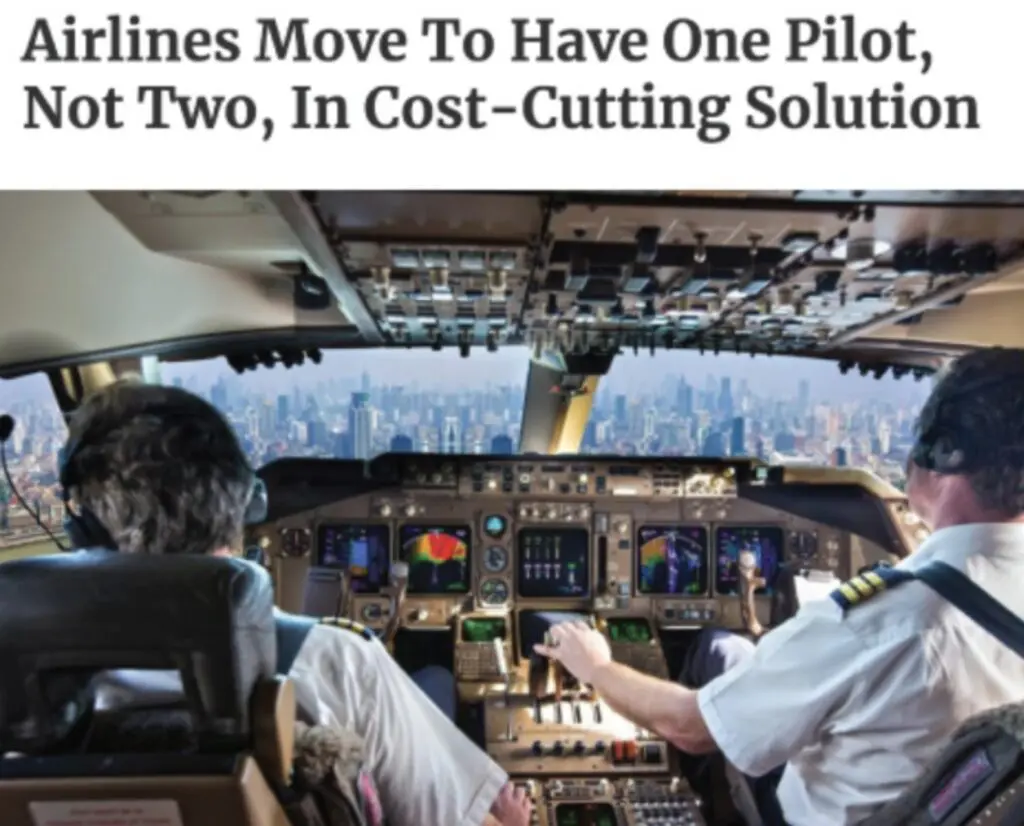The Weekly Reflektion 05/2023
In an effort to improve productivity, or achieve an optimisation in a delivery, or perhaps just to keep the organisation on its toes, positions are removed or added, reporting lines changed, workloads increased, and positions or people moved to different geographical locations.

Are our risk assessments for organisational changes effective, or just tick-the-box exercises?
One of our subscribers, and someone we have worked closely with in the past, Morten Andreassen, brought an article in Forbes magazine to our attention. It was entitled “Airlines Move To Have One Pilot, Not Two, In Cost-Cutting Solution”.Cost cutting is either present or just around the corner and is an aspect that we should expect in all commercial activities. The article concludes, worryingly, that “….this is just a logical conclusion to the increasing automation that has been happening in the aviation industry for decades.”
Reflekt has led many investigations and studies in the past few years, and one weakness that has repeatedly emerged is risk management of organisational change. Unfortunately, a thorough risk assessment of the consequences of these changes is either not carried out or carried out to confirm a decision that has already been made. The assessment is expected to conclude that the risk associated with the organisational change is acceptable. Some mitigation measures are identified, however not always implemented before the change takes place. There seems to be an attitude of ‘let’s try it and see how it goes, then adjust if problems arise’.
In an industry where there is pressure to downsize, or ‘right-size’ according to the management, the employees can be reluctant to stick their heads above the parapet and ensure that they are involved in an effective risk assessment and that the risks, uncertainties, and potential consequences are identified and mitigated. Both the oil and gas industry and the airline industry are subject to these pressures.
An organisation is normally sized to cope with a given dimensioning incident, or set of incidents, and plans are put in place to increase the competence and capacity of the organisation if the need arises. The oil and gas industry often seem to dimension the organisation for an operation to go smoothly without considering how to react quickly when situations change. We have seen organisations undermanned due to a poorly risk-assessed organisational change, losing people to other industries because of continuous overwork, and the destruction of the work/life balance. The situation then deteriorates for those left to cope with the increasing workload.
When an organisation is correctly dimensioned for the majority of its activities, the organisational barriers to avoiding major accidents are termed ‘robust’. The two pilots we have in our airliners are both barriers to preventing major accidents, both with independent tasks, and routines forchecking each other. Removing one of these barriers weakensthe system significantly and where one pilot requiresimmediate support in the case of a mistake or a failure, where will this immediate support come from? Will it arrive quickly enough to prevent an air crash?
The consequence of getting the risk assessment oforganisational change wrong is not just poor organisational performance, it is potentially the loss of our lives. In August 2022 we had a series of three Reflektions on the Boeing 737 Max air crashes that was a tragic reminder of the cost of poorly managed changes. Will the airline industry be able to manage this change without a ’trial and error’ approach to risks?
